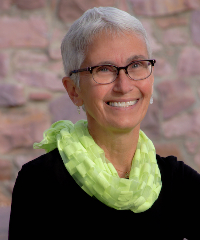Science Cafe Posts - Mission Mosquito
GLOBE Breadcrumb
- Home >
- Mission Mosquito >
- Science Cafe Posts
Banner and NavBar
Science Cafe Posts
Please complete your formal training to unlock the ability to create GLOBE Blogs.
See Training > User Roadmaps in the site navigation to learn more.Blogs
Entries with Investigation Areas Earth As a System .

Adopt-a-Pixel | Where does water meet land in my community? Scanning the Area As our first assignment as part of the Earth System Explorers team, we've been tasked with making our first observations using the GLOBE Observer App. The goal was to make 12 total observations (6 Potential Mosquito Habitat & 6 Land Cover). To be more efficient, I decided to make all of my observations...

I built my mosquito traps on June 20th and ran the experiment until July 15th. I collected a total of 15 observations during this period. To construct the traps I used three identical pots to hold water. The goal of my experiment was to find which type of mosquito bait would be the most effective at attracting and sheltering mosquitos. For the three baits I used dried leaves, grass clippings,...

AOI Fieldwork At first, collecting land cover data for 37 points within my area of interest felt like a daunting task. However, after only a few "expeditions" in the past week, I was able to complete all 37 observations. To make my work easier and more accurate, I intentionally choose an AOI that would contain as many points as possible within a nearby park. This was to ensure that I could...

On May 1, 2021, I did a lot of things. Most of them involved staying home, logging in to Microsoft Teams for virtual school, and doing my homework. Little did I know that my life would change that very evening. I logged off from school and opened Outlook to check my email, and I saw it immediately: “Congratulations on your NASA virtual internship!” For the next five months, I was immersed in...

My experiment aims to test how two variables impact the likelihood of mosquitoes breeding. The first variable is the water type, and I am testing with tap water, filtered water, and muddy water from a local pond. The second variable is the food in which mosquitos will breed. Therefore, I will add rice water and sugarcane juice to the three water types. So, I will end up with nine...

In October, our SEES research team presented at the 2022 MIT Undergraduate Research Technology Conference (MIT URTC), becoming the first SEES team ever to be selected to present a paper at this competition. We wanted to share our experience with MIT URTC, from the starting point of our SEES research project to developing a publishable manuscript and presenting our paper at the conference. At...

I have 5 identical buckets placed in shady areas around my yard. Two of these buckets (Buckets 1 and 2) are filled with equivalent amounts of water, grasses, leaves, and dirt, while another bucket (Bucket 3) contains everything but the dirt. I wanted to examine how dirtier water could attribute to a more habitable microenvironment for mosquitoes. My two other buckets contain equivalent...

First Post: For my project, I wanted to see how CO2 emissions could affect mosquito activity. To do this, I set up 4 water bottle traps. 2 of the traps contained a solution of tap water (1 cup), sugar (1/4 cup), and yeast (1 gram). The yeast and the sugar react to release carbon dioxide. (Fermentation) The other two bottles contained a basic solution of tap water and grass. One bottle of...

For my experiment, I decided to see which fruits or foods in general that mosquitos would be attracted to. From left to right, it was the cantaloupe, watermelon, control(which is nothing), and a pineapple in the last one. I wanted to test whether different fruits or foods affected the amount of larvae and mosquitos that are born. For the first week of testing, I did not spot anything or any...

For my mosquito habitat experiment, I decided to approach it from the perspective of the size of containers. I had 5 different containers, each of which is a different size, from a small bottle to a soap bottle to the largest, a gallon jug. For the first week of testing, I was able to set up the traps in their selective locations, however, was not able to check them till week the end of week 2...





